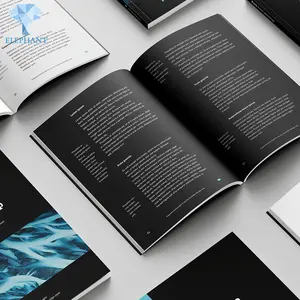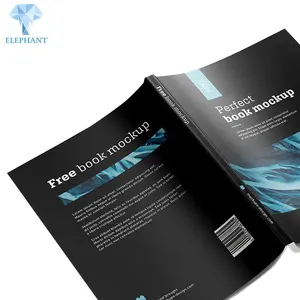
All categories
Featured selections
Trade Assurance
Buyer Central
Help Center
Get the app
Become a supplier

(16088 products available)



















































Board books come in many types and for many audiences, making them the ideal choice for large projects and orders. Wholesalers usually provide various kinds so that retailers can select the best ones for their customers. Common varieties include the following.
These are simple board books with printed pages that serve very young readers. The pages are thick and durable, designed for babies who like to touch and sometimes chew their books. This type of board book is often aimed at parents buying something for a toddler.
Like the basic board book, these involve something extra. Some pages have different textures, or what looks like fur or feathers is actually something the child can touch. This tactile experience fascinates little readers more, and these books are often about animals or doing things outside.
These books have small flaps that children can pick up or shove out of the way to discover what lies beneath. These books' engaging formats make them popular picks for groups. Young readers always look for something fun and interactive. These are wonderful books for children's learning programs because the flaps can reveal new letters, numbers, or simple objects.
Newer board books include buttons that kids can press to hear sounds. Pressing a button makes the book interesting, especially for our little ones. Sound board books go well with tales about animals, music, or fun activities. Wholesalers pick these books for their strong demand. This kind of board book is also useful for promoting younger kids' reading interests.
These books tell simple stories and include basic moral lessons or little adventures. These books help little kids focus and stimulate their imaginations. Board storybooks are usually tied to a holiday or occasion, such as Christmas or birthdays, and then marketed for those times of the year.
These books are perfect for children learning shapes, colors, or the alphabet. Teachers or parents looking for fun ways to teach their children something usually buy these books. These books can have games or questions, encouraging kids to interact with the material. Educational board books are valuable to kindergartens or daycare centers that want to help young kids learn through play.
The design of board books plays an important part in how well these books do in the market. People selling the books pay close attention to how the books feel, what the content is, and how the books look so that they will be popular with young children and their families.
The size and shape of the book really count because these books are meant for the smallest kids to be able to handle. Making the pages thick but light enough for kids to hold themselves also matters. A square or rectangular shape is the most popular because it offers enough space for nice images, making the book look more inviting to readers.
Most covers of board books are made from very durable materials that can bend but not break. These covers are perfect for tiny hands that want to explore their world through touch and sometimes by chewing on things. The graphics on the covers play an important role in marketing the book. Engaging designs grab a parent's eye while ensuring the cover material can easily survive wear and tear.
Visuals have to be bold and bright to catch the little readers' attention. Cartoons are usually chosen for the illustrations because they are easy for kids to understand and connect with. Using many different colors and shapes helps improve young children's brains and keeps them interested in the book. The images should go with the text so kids know what words go with what pictures.
Simple layouts work best since too many options can confuse very young children. Keep the text small and the images large so babies see the pictures more than the words. Wholesalers like this type of design because they let teachers use them in classes or read them to groups of children.
Simple fonts make it easy for little ones to recognize letters and words. The letters need to be big and clear, with spaces between them so kids can figure out how to read them. The text also needs to fit nicely with any images on the page so everything is easy for small kids to understand.
Wholesalers often stock board books with extras like shiny parts, different page textures, or pops up to make the reading more dynamic. These fun additions make the kids more involved and help build their motor skills. Adding something different to the book can make it a popular choice among retailers in many markets.
When people think of board textbooks, they may not believe the materials are as varied as regular books. They do, however, use some of the same materials for their covers and some even have flaps or textured pages. Manufacturers often use metal for these features and scrap them for profit.
Straight books made from board materials include:
Cover materials
The main material used for most covers is called ~B~ fluted paper. It is flexible yet very strong, which makes it great for little hands that want to explore. Paperboard and cardboard are also used, although they do not last as long. Covers made from these materials may feature zips and pockets to store important items. They also have flaps and textured materials sewn onto them for added fun.
Copper and brass are sometimes used to bind the pages. Copper binding is usually limited to higher-end textbooks because copper is so expensive. Brass wire is also pricy but gives a gold-like finish that many people find very pretty.
Iron and steel are commonly recycled from older textbooks that have seen better days. They are often reused to bind the pages together securely so every page stays put even with lots of turning! They may also be used in the covers or deeper features but usually have a coating like plastic or vinyl to give a smoother feel.
Zinc is often used with other metals to help provide a coating that protects against rust. It also makes any metal parts shiny and smooth so they don't scratch or cause harm. Display racks are often made from thin metal wire like aluminum to hold textbooks neatly while they sell in stores or libraries.
As more kids read paperbacks at home or through digital downloads, the number of board books in bookstores and libraries has gone down. People still want them, though, for special projects or for teaching kids in a hands-on way. That means there is room for even more board books in the future!
Board books are the preferred choice for many businesses and groups who want to order large amounts of books at once. The following situations explain why and how the books are commonly used.
Local stores, big box chains, and online sellers all purchase board books by the dozen. This lets them stock lots of titles and categories, which brings in customers of all kinds. The simple yet striking covers attract little kids from afar, while the sturdy pages give parents peace of mind that the books can last through years of shared enjoyment.
Having many board books for kids lets stores sell something for everyone looking for the ideal gift for a family with toddlers. Bestsellers, seasonal favorites, and themed books help shops keep sales strong all year round. Every board book engages tiny hands and curious minds with colorful art and fun interactions.
Schools and daycares usually request large amounts of educational board books, which is why they order in bulk. They use them to help children learn subjects like shapes, colors, numbers, and the alphabet in entertaining ways. Schools pick board books to support learning through fun activities while encouraging early literacy skills. The tough designs ensure they last through group lessons and multiple little readers.
A non-profit organization often issues board books to help low-income families or young kids get a head start on reading skills. By ordering in bulk, they can give away or sell inexpensive copies that won't wear out during shared use. These books help promote bonding between caregivers and children while supporting early literacy in communities.
Board books are popular at holiday gatherings, birthday parties, and other celebrations. Many people order the same titles so stories about Christmas or birthdays can entertain many kids at once. Special editions of group activities help form cherished memories of reading together.
People frequently seek board books with repeating patterns, balancing colors, or aligning shapes to teach kids about patterns. This lets teachers show kids how to spot and make patterns and bring concepts like math and science to life early on. Companies frequently produce themed sets of books for holidays, seasons, or all about nature and space.
Sizing and caring for these books lets wholesalers supply the happiest book lovers.
The thicknesses of board books make them great for small kids because their fingers can flip the pages individually. Most standard books are about 1 inch wide and 5 inches tall or higher. Page corners are typically rounded to make handling safer for toddlers. The covers are much tougher—nearly half an inch thick—to withstand lots of exploration and stacking.
Board books usually join their pages using a process called "flush trimming." This technique securely attaches each page flat against the binding edge. It keeps little hands from ripping out any books! Wholesalers also like staggered binding pages that alternate shorter and longer as a fun design element.
Commonly, board books pages measure about 1/8 inch thick from heavy paper or cardboard. The thicker the pages, the better they can handle being read with wet or dirty fingers. Each page is reinforced by the binding method chosen.
The paper stock used in board books is graded between 120 to 220 GSM so it is both thick yet flexible enough for small hands.
Some simple steps keep board books looking like new for years. First, place any fresh books in a climate-controlled area since extremes can warp the pages and covers. Moisture can also weaken the binding glue and cause pages to fall out. Next, wipe down both the front and back covers regularly to remove dust and sticky fingerprints.
For badly marked pages, use a damp cloth and a little mild soap to clean them gently. Don't soak the pages or spine, as excess moisture can ruin the sturdy materials. Finally, store books standing upright on a solid shelf so they keep their shape and don't bend inward. Leave enough space between each title so none of the spines or covers get squished. Following these easy tips means children will enjoy exploring these books for many storytimes ahead while preserving their bright fun designs as intended!
A1: Ordering large quantities of board books means better deals for each book. It also ensures companies will have enough copies of the same title to meet demand.
A2: Board books are made to survive lots of handling. Their covers and pages use thick materials glued together tightly so little hands can't tear them apart.
A3: Board books became popular as more people realized babies wanted interactive books too. They loved how these helped tiny readers explore through touch and learning.
A4: Many board books do include elements like lift-the-flap surprises, pop-ups, or textures. Their simple designs help kids learn motor skills while keeping their interest through storytime.
A5: Board books promote early literacy through hands-on learning. With strong binding and fun extras, they make wonderful teaching tools for interactive lessons.
A6: Pick books with strong materials built to last through lots of tiny readers. Choose appealing themes with many designs for variety and joy during storytime!